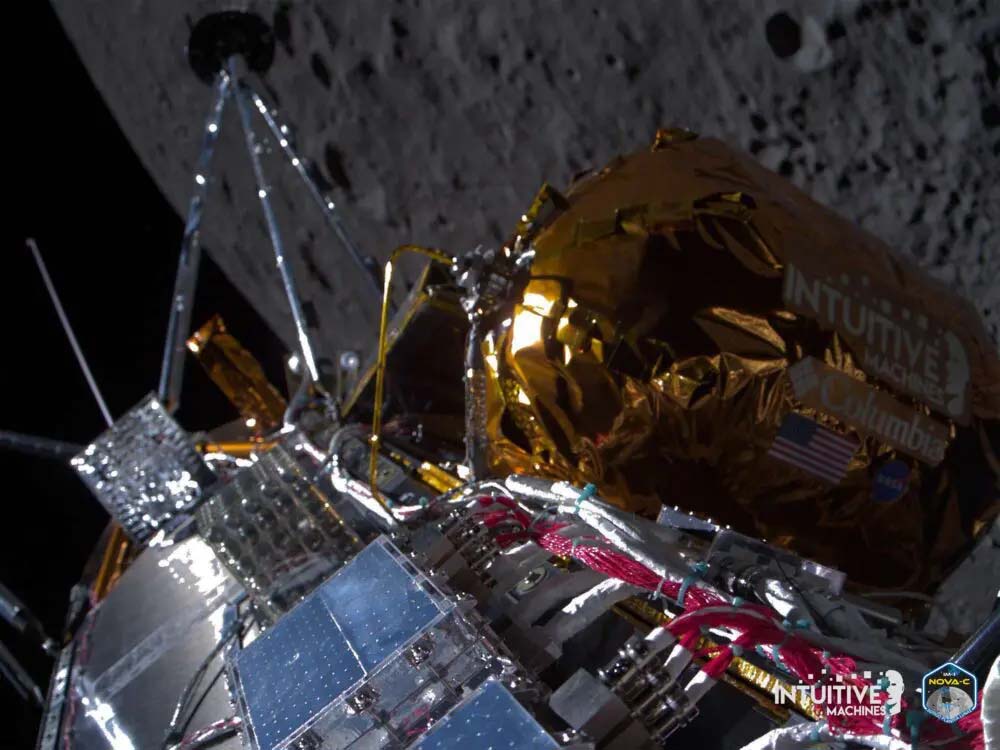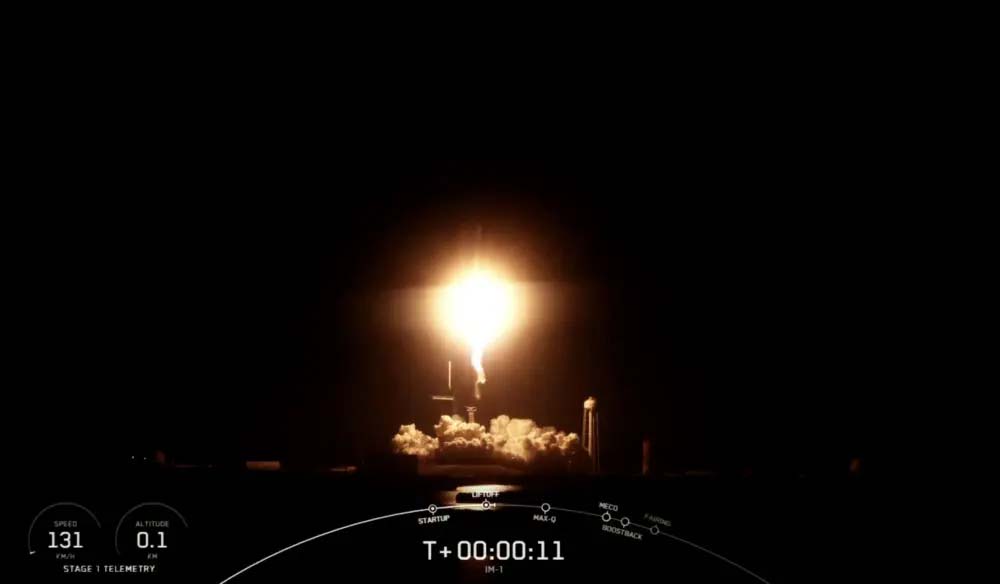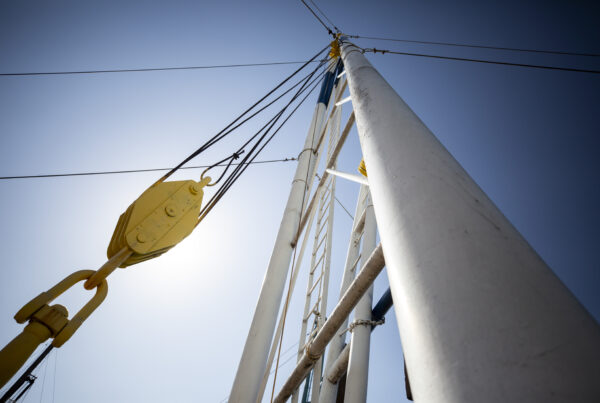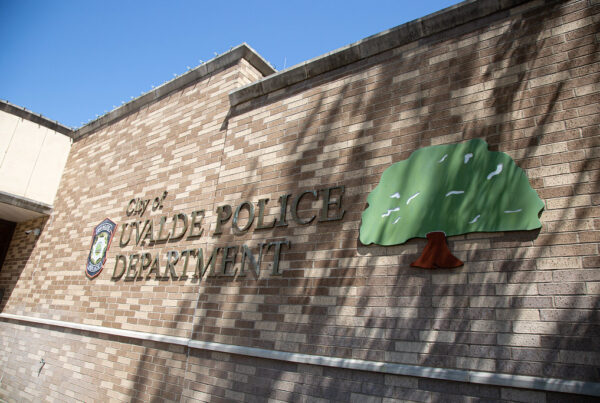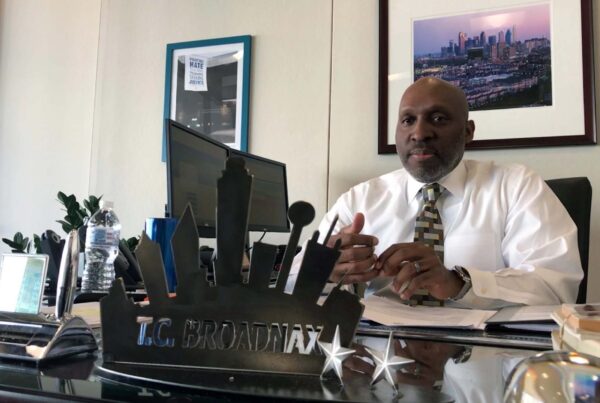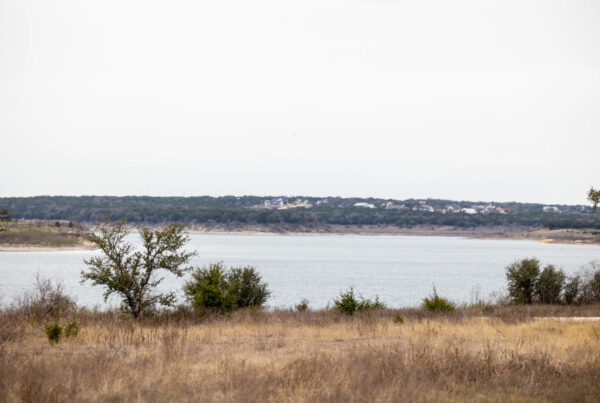From Houston Public Media:
An unmanned spacecraft built by a Houston company has landed on the moon, making it the first commercial landing on the lunar surface and the first American spacecraft to make a soft landing there since the Apollo program ended in the 1970s.
The Odysseus lander from the Houston company Intuitive Machines touched down near the moon’s south pole at approximately 5:23 p.m. Central Time on Thursday. More than 10 tense minutes passed after touchdown while the lander’s mission control team in Clear Lake worked to establish communications with the vehicle and confirm that it was safely there.
As the world waited, Dr. Tim Crain, the company’s chief technology officer, made the announcement that contact had been made.
“Odysseus has a new home” https://t.co/oVgLobxH8T
— Intuitive Machines (@Int_Machines) February 22, 2024
“What we can confirm, without a doubt, is our equipment is on the surface of the moon, and we are transmitting,” Crain said.
The company’s CEO Steve Altemus followed with a message lauding his team’s “outstanding effort” to the backdrop of video of Intuitive Machines employees celebrating from its headquarters at the Houston Spaceport at Ellington Field.
“I know this was a nail-biter, but we are on the surface, and we are transmitting, and welcome to the moon,” Altemus said.
The landing was delayed Thursday when there was a problem with some of the systems designed to help the lander autonomously select a safe place to land. A software patch had to be written and beamed to the lander allowing some other systems on board to assist with that process.
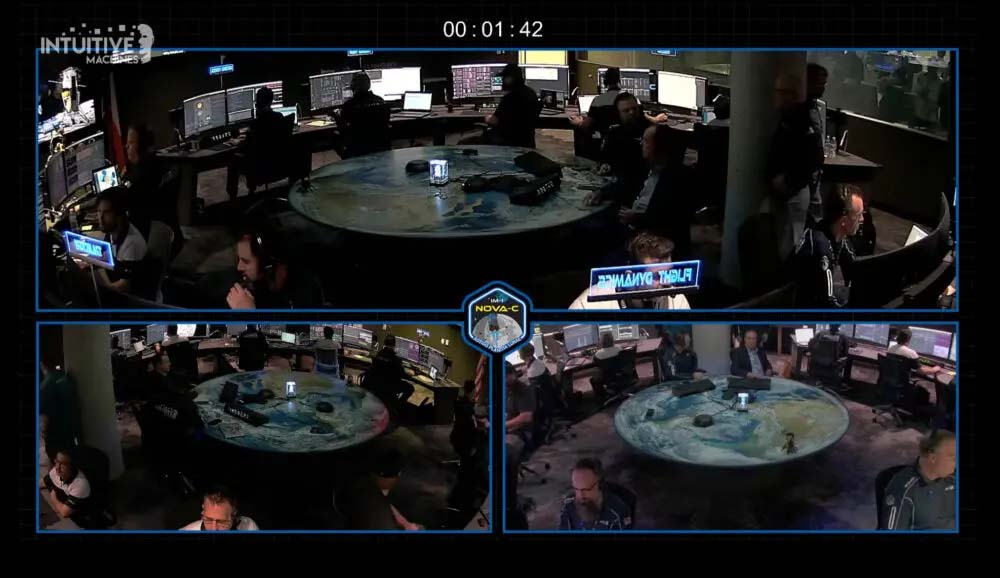
Intuitive Machine’s mission control center in Clear Lake as Odysseus was just moments away from landing on the moon.
Intuitive Machines
The lander’s initial signal from the moon was weak, leading some to wonder if the vehicle had landed askew or toppled over. However, several hours later, Intuitive Machines announced that it had confirmed Odysseus had landed upright.
After troubleshooting communications, flight controllers have confirmed Odysseus is upright and starting to send data.
Right now, we are working to downlink the first images from the lunar surface.— Intuitive Machines (@Int_Machines) February 23, 2024
A week on the moon
The mission, dubbed IM-1, will perform numerous tasks and experiments over the course of roughly seven earth days that will help NASA prepare for future crewed trips to the moon and beyond.
This is the first successful mission of NASA’s Commercial Lunar Payload Services (CLPS) initiative where it awards contracts to private companies to deliver a variety of technology to the moon in order to prepare for future human missions. Another vehicle that launched for the moon last month suffered a mission failure hours after liftoff.
Odysseus’s payloads include technology to collect data on the plume of debris created when the vehicle lands in order to better prepare future touchdowns. As it prepares to land, Odysseus will eject a device that will look back and capture imagery of the vehicle landing, creating what’s being described as the first “space selfie.”
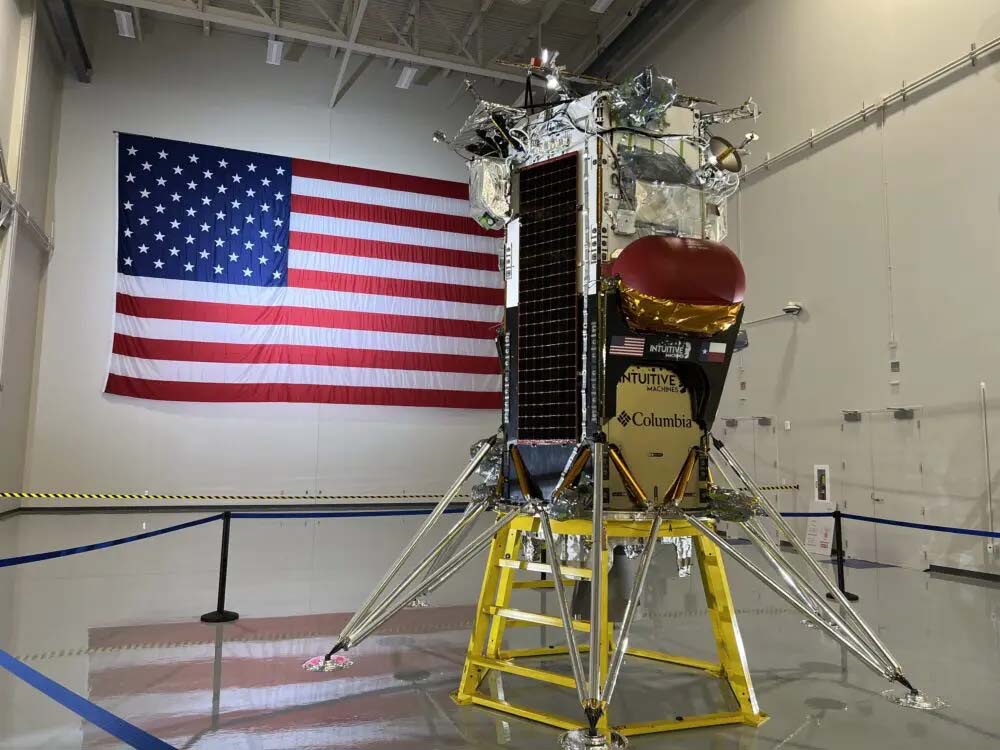
The Odysseus lander inside the headquarters for the Houston commercial space company Intuitive Machines.
Michael Hagerty / Houston Public Media
MORE: Spacecraft built in Houston gets ready for a historic mission to the moon
Former astronaut Jack Fischer, the vice president of production and operations at Intuitive Machines, said in October that will create a memorable moment for the mission in the public consciousness.
“We’re really excited about that,” he said. “I think that’ll be a fantastic way to give a completely different view of landing on another celestial body.”
The vehicle also carries a retroreflector array that will be a part of a network of location markers that will be used on the lunar surface for decades to come.
The company says the mission will “lay the groundwork for a burgeoning lunar economy, opening new possibilities for research, commerce, and exploration” on the lunar surface as resources and long term infrastructure there are developed.
Odysseus launched from Kennedy Space Center just after midnight Central Time on Feb. 15 aboard a SpaceX Falcon 9 rocket.


